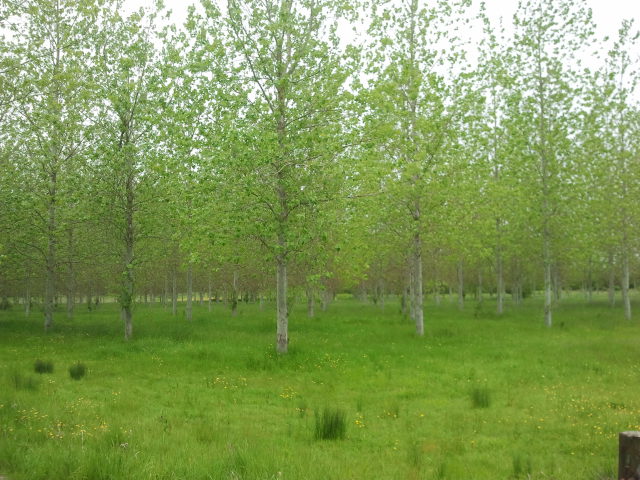

Though SRC management is potentially beneficial to soil chemical and biological fertility, it is still a monoculture grown at high density. Although the sludge can be recycled as an amendment for agricultural soil, liquid effluents need remediation before being discharged into water bodies to prevent eutrophication and to maximize the recycling of nutrients through the valorization of the woody biomass.



The treatment of contaminated urban and industrial effluents is typically conducted in treatment plants that remove potentially toxic elements and organic pollutants with high efficiency. In fact, willow and poplar SRC crops have been used in buffer strips to mitigate and prevent water eutrophication and to reduce heavy metal mobility in phytoremediation interventions on contaminated soils. Īnother application of SRC plantations is soil restoration by excessive nutrients or contaminants, in which fast-growing trees have proven to be effective, owing to their high biomass production and effective root uptake. In fact, SRC has positive impacts on several soil properties, such as soil organic matter (SOM) and nutrient content, a reduction in soil compaction and erosion, and an increase in soil biodiversity, particularly on degraded soils. Additional incentives to the conversion of agricultural land to SRC practices are related to its potential for C sequestration either in the soil or in woody biomass. The first and largest SRC-managed areas were in Sweden, Poland, the USA and Northern Italy, but a steady increase in the number of SRC plantations worldwide has been favored by subsidies for more sustainable and integrated bioenergy supply chains. pseudoacacia), because they are characterized by fast growth rates, high yields and are easily harvested. The species used in SRC are mostly willow ( Salix spp.), poplar ( Populus spp.) and their hybrids, eucalypt ( Eucalyptus spp.) and black locust ( R. In this cultivation practice, the plant roots are left intact in place and the nutrients are stored in the root system to ensure vigorous regrowth of the shoots for up to 30 years before the stand needs to be replanted. Short rotation coppice (SRC) refers to the growth of multi-stemmed woody plants over two- to five-year rotation periods. Overall, we concluded that SRC management can be considered as a phytotechnology that ameliorates the habitat for soil microorganisms, owing to TOC and nutrient enrichment on the long-term. The microbial taxa–area relationship was valid in both soils, but the space turnover rate was higher under SRC within 0.125 m 2, which was possibly linked to a more benign environment under SRC, whereas similar values were reached beyond thisarea. This indicates a more benign habitat under SRC for microbial communities after relieving heavy metal stress, consistent with the lower phytoavailability of some metals (i.e., As, Cd, Ni and Zn) and higher total organic carbon, NO 3 −-N and P concentrations. The SRC soil had lower relative abundances of microbial genes encoding for metal(-oid) resistance, antibiotic resistance and stress-related proteins. GeoChip analysis showed a lower functional gene diversity in SRC than in C soil, whereas microbial ATP and respiration did not change. Here, we studied soil microbial functional genes and their biogeographic pattern under SRC with willow trees as compared to those under permanent grassland (C). However, its long-term effects on soil microbial communities are poorly characterized.
#Willow short rotation coppice full
Click here to read the full document.Short rotation coppice (SRC) is increasingly being adopted for bioenergy production, pollution remediation and land restoration. The focus for willow opportunities in NZ will initially focus on providing land owners a new land use option with a potential for revenue as land is forced to change to uses which have less nutrient leaching and run-off in two distressed lake catchments in the Central North Island. SRC willow could also be used to treat waste water high in nutrient levels. SRC willow is a sustainable land use in catchments where traditional farming land use reduces lake water quality through nitrification of the eco-system. Short Rotation Coppice willow provides an opportunity to widen the sources of biomass for heat and transport fuels. A key energy demand is liquid transport fuels derived from oil, which has been identified as both a risk and opportunity. Biomass currently only supplies a limited portion of primary energy, mostly as wood for heat in the wood processing sector. New Zealand is dependent on domestic and imported fossil fuels for heat and transport energy. Promising resources and systems for producing bioenergy feedstocks


 0 kommentar(er)
0 kommentar(er)
